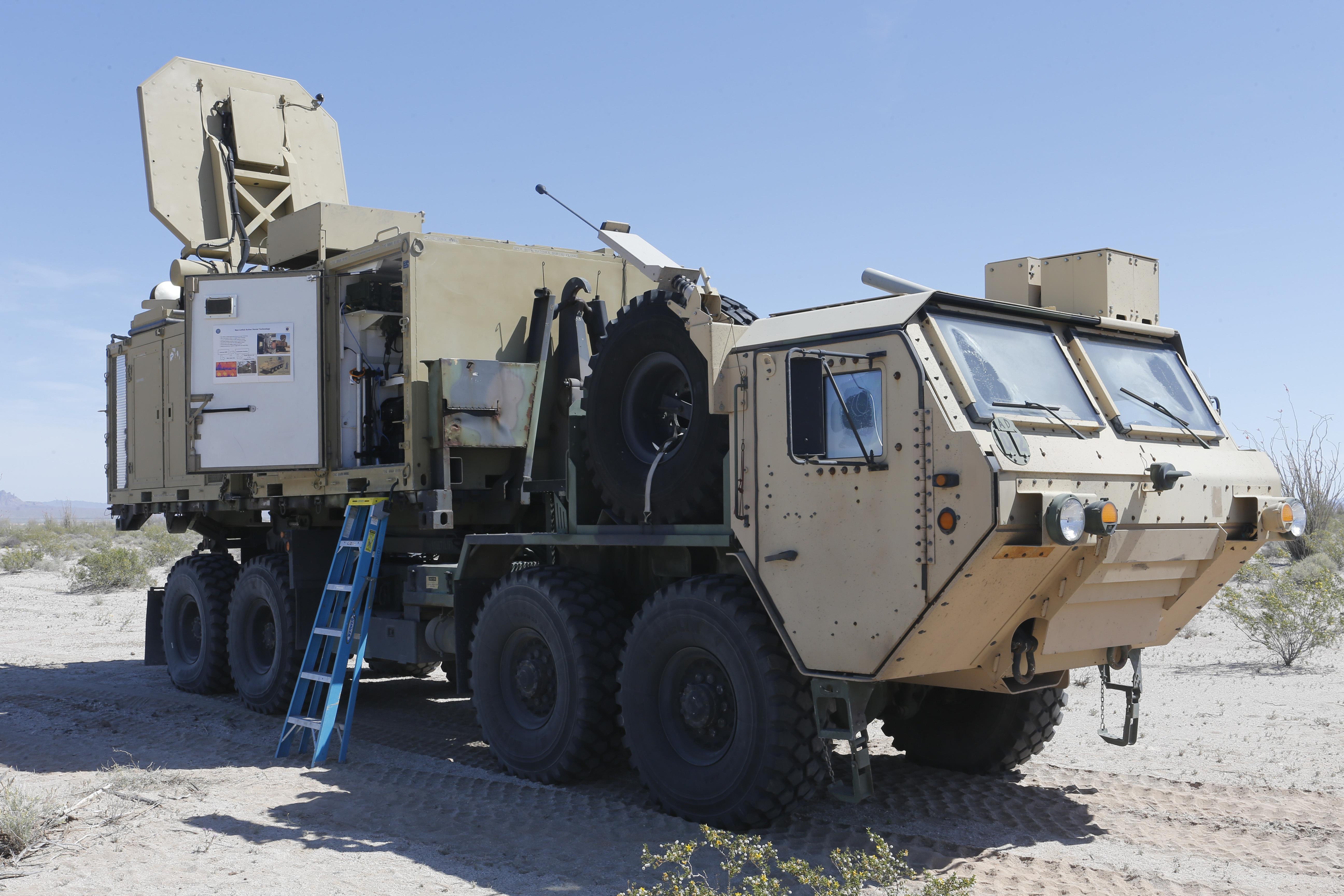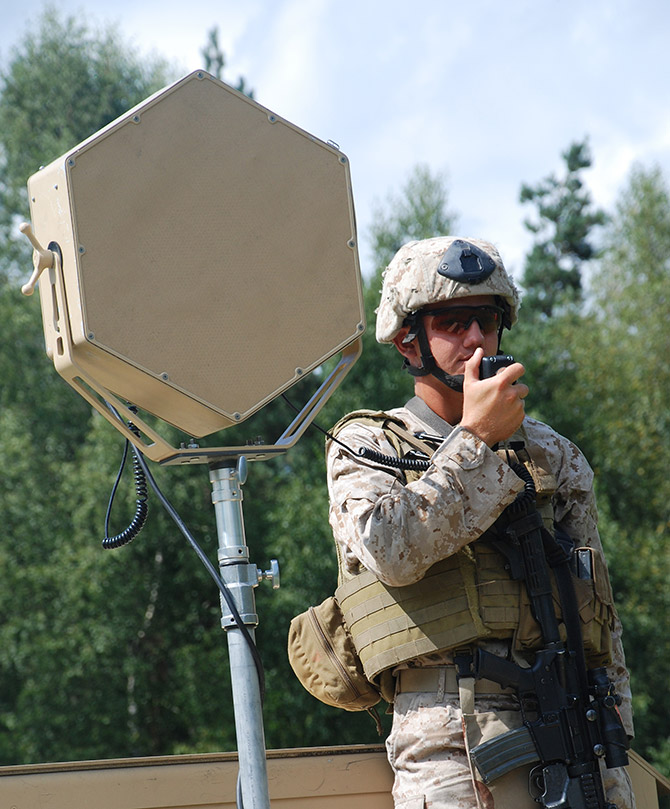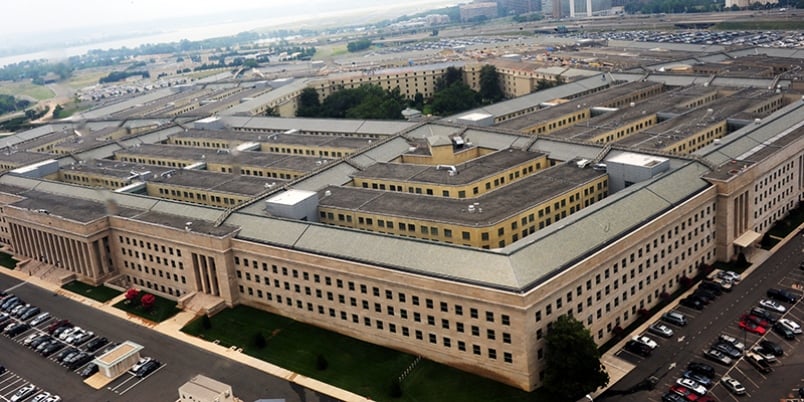
MARINE CORPS BASE QUANTICO, Va. – The Pentagon’s Joint Non-Lethal Weapons Directorate is hoping to reframe the talk about non-lethal weapons amid a push by the Defense Department to boost lethality for high-end warfare.
The office’s director, Marine Corps Col. Wendell Leimbach, instead wants to talk about capability gaps in an era of gray zone warfare with Russia and China and where “intermediate force capabilities” – an umbrella term that also includes non-lethal weapons – would give American forces a better chance to compete.
Leimbach said it was hard at first to get meetings with service leaders when he introduced himself as the non-lethal guy. Now, he said while speaking at the Modern Day Marine 2019 exposition last week, he’s getting more meetings, and more warfighters are starting to acknowledge the capability gap they’ve experienced for years without realizing it.
He couched his talk around a warfare spectrum with Phases 0 through 5: Phase 0 is shaping the environment, Phase 1 is deterring, Phase 2 is seizing the initiative, Phase 3 is dominating, Phase 4 is stabilizing and Phase 5 is enabling civil authorities to resume control after the war. Aside from Phase 3, or all out armed conflict, he said the rest of the spectrum is “gray zone” warfare.
Pointing to a diagram of that warfare spectrum, he said, “the vast majority of it is filled with what? The gray zone. And how often do we spend time in the gray zone? The vast majority of time is spent in the gray zone. Yet, the conversation today is about enhancing lethality and buying capabilities for Phase 3, or armed combat, armed conflict,” he said to an audience of current and former Marines and industry.
“I would offer that all the communities across all the services need to pay attention to the capability sets that exist within the gray zone because our enemies think differently than we do. Our enemies know that we think under this construct of phase 3, the dominate phase, and what they do is they hang out right here, they hang out in 2.75. Chinese fishing trawlers buzzing by the Philippine fishing boats, Russian frigates buzzing by American ships, knowing that we don’t have capabilities to push back in this zone. And so they intentionally stay just below that threshold.”
Leimbach added that, increasingly, adversaries are taking videos of interactions with American forces, knowing that the Americans are limited by the tools they have and will either not respond to their aggression or will over-respond with lethal force that escalates the situation – the Americans taking a warning shot across a fishing boat’s bow, for example.
Even in the kind of counter-terrorism operations the Marines have fought in the Middle East for 18 years now, Leimbach said the same capability gap existed.
“How many tragic examples do people here know of where lives were lost in Iraq and Afghanistan because we were unable to deal with the local population that approached a perimeter of a unit that had just gone through high-intensity combat and all they had was lethal effects?” he said, to nodding heads in the audience.
“I’m a tank guy. I love tanks. I love the lethality of tanks. And they are absolutely necessary for high-intensity combat because there’s some people who you’re just going to have to kill, because that’s the way it is. And you absolutely need to have those capabilities because of the deterrence. I completely agree,” he said.
“But I would offer, if you look at the suitability of lethal capabilities across the competition continuum, you would see that in three of the phases, not appropriate; two of them, marginally; and only one is it ideally appropriate. In that scenario, I would say it is a challenge to explain why we are spending virtually all of our investment money in being prepared for phase 3, while the capability set for dealing with the rest of the spectrum literally rounds to zero” when looking across the Pentagon’s five-year spending plan in the Future Years Defense Program.

While Leimbach’s Joint Non-Lethal Weapons Directorate has no acquisition funds or authority, it does spend research and development dollars, and the colonel had several promising technologies to talk about to the government and industry audience.
He said the Marine Corps will already field a Common Remotely Operated Weapon Station (CROWS) system on its in-construction Amphibious Combat Vehicles, and the system will have an acoustic hailing feature as a first step to try to stop approaching people or vehicles. The system could also carry a laser dazzler, he said.
He noted the Marines will deploy all around the globe with their ACVs, using them for training and for humanitarian assistance and disaster relief missions. In the midst of civil unrest following a major disaster, he said, the Marines wouldn’t want to threaten lethal force to achieve crowd control; rather, having these non-lethal capabilities would better help them achieve their mission.
He showed off videos of an Active Denial System that projects millimeter wave energy, which causes a burning sensation on the skin of anyone standing in the beam’s path. In one video, the system is directed at a sniper trying to shoot out a window; the sniper has to back away from the window due to the beam, and the Marines don’t have to shoot the sniper or damage the building to keep him from harming Marines operating on the ground below. A second video shows the system being directed at a car approaching a perimeter. Leimbach said if the driver feels the burning beam and turns around to get away, they were likely lost or otherwise unaware of the perimeter. If the driver ducks down below the dashboard and continues towards the perimeter, the Marines can determine bad intent and take more serious action.
Leimbach also showed off a microwave weapon that can stop small boats or drones, shutting off the engine rather than blowing them up with a kinetic weapon or burning a hole through the engine like a laser gun. He said many military officers’ gut instinct is still to want to blow up a threat, but in a crowded harbor or among dozens of fishing boats at sea, millimeter-wave and microwave weapons can stop a threat while also causing little to no collateral damage.
“It may not be lethal, but it’s still very effective,” he said.
Going back to his fishing boat example, Leimbach described a vignette of a U.S. Navy ship operating in the South China Sea, and a Chinese fishing boat approaches. Armed with all the systems the Joint Non-Lethal Weapons Directorate is advocating, the Navy ship could use an acoustic hailer to first let the fishing boat know the Navy sees it and is aware of the path it’s taking. If the boat continues, the Navy could use a dazzler or other optical system to deter the boat from coming any closer. If the boat still continued, the Navy could turn off its engine with a microwave weapon – ensuring the safety of the Navy ship and crew, while not escalating the situation, and while denying the fishing boat the opportunity to create a scenario that plays well online as information warfare.
“Investments in IFC do not come at the expense of lethality,” Leimbach said, noting that the point of the warfare spectrum is to avoid all-out armed conflict and, if the U.S. finds itself in armed conflict, to get out quickly by either dropping back down to Phase 2 or hurrying and getting to Phase 4.
He praised his intermediate force capabilities portfolio as providing the warfighter tools to avoid armed conflict, “and if you find yourself in a shooting war, these capabilities would allow you to deescalate and get out of that situation faster.”





